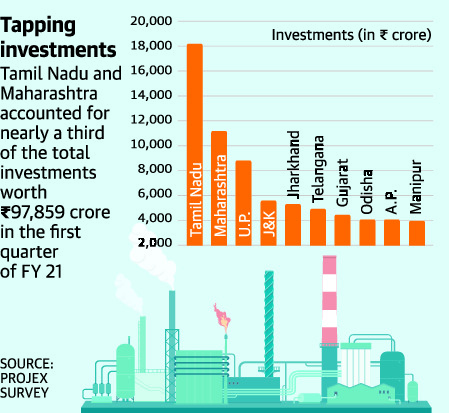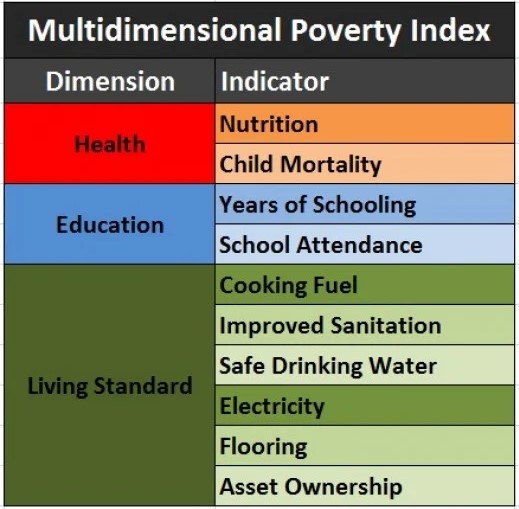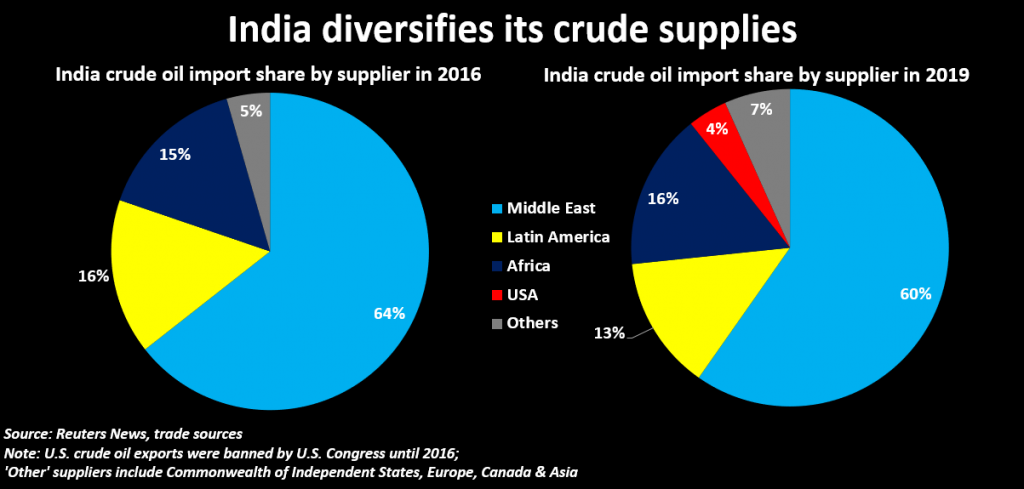Contents
- Tamil Nadu: India’s top investment destination
- Nepal’s archaeologists to study possible Ramayana site
- India got 273 million out of poverty in 10 years
- India set to create its first overseas oil stockpile
- Brittle embankments add to flood woes in Assam
TAMIL NADU: INDIA’S TOP INVESTMENT DESTINATION
Focus: GS-III Indian Economy
Why in news?
Tamil Nadu has emerged as the country’s top investment destination in the first quarter of this financial year, even as overall fresh investment announcements in India slumped to the lowest in five years amidst a period marred by the extended pandemic-induced lockdown.
Details

- Tamil Nadu accounts for almost 20% of the investments envisaged to execute more than 1200 projects in India in the first quarter.
- The Tamil Nadu government had signed more than 15 MoUs (memorandums of understanding) with investors on May 2020.
- Tamil Nadu is also host to three of the five data centres envisaged to come up in the country.
Boost comes in the times of collapse?
While private sector investments on the whole collapsed to just about 40% of the total investments in the quarter. (To put in into perspective, such ratio was last seen in 2013-14.)
What about other states?
While States like Tamil Nadu and Maharashtra held investors meet and signed MoUs, Uttar Pradesh, Madhya Pradesh and Karnataka reworked labour laws, started building land banks and sent feelers to foreign companies for investing in their States.
Impact
- Fresh capacity additions are expected in the healthcare and pharma sectors with immediate effect.
- The coming quarters will also demonstrate the efficacy of the Centre’s stimulus package — that included financial and fiscal reforms along with steps to enhance the agriculture and small-scale industries — in attracting foreign and domestic private capital.
-Source: The Hindu
NEPAL’S ARCHAEOLOGISTS TO STUDY POSSIBLE RAMAYANA SITE
Focus: GS-I Art and Culture
Why in news?
Nepal’s Department of Archaeology is holding cross-ministerial meetings to explore an archaeological site in Thori near the border town of Birgunj.
Details
- Nepalese historian said that according to the geographical descriptions in Valmiki’s Ramayana, it appears that Lord Ram’s Ayodhya was located nearer to Janakpur.
- Nepal’s foreign ministry claimed that Mr. Oli’s comments were not aimed to hurt anyone’s sentiment.
- Thori is known to have a cluster of ancient Hindu religious sites that draw pilgrims from different parts of Nepal.
Recently in News: Birthplace of Ram
- Ramjanmabhumi-Babri Masjid: The Ayodhya dispute was a political, historical, and socio-religious debate in India, centered on a plot of land in the city of Ayodhya, Uttar Pradesh.
- The issues revolve around the control of a site traditionally regarded among Hindus to be the birthplace of their deity Rama, the history and location of the Babri Masjid at the site, and whether a previous Hindu temple was demolished or modified to create a mosque.
- The mosque there, the Babri Masjid, was demolished during a political rally which turned into a riot in 1992.
- The first recorded instances of religious violence in Ayodhya occurred in the 1850s over a nearby mosque at Hanuman Garhi. The Babri mosque was attacked in the process.
-Source: The Hindu
INDIA GOT 273 MILLION OUT OF POVERTY IN 10 YEARS
Focus: GS-II Social Justice
Why in news?
India had the biggest reduction in the number of multidimensionally poor people estimated at over 270 million during the 2005-15 period.
Details
- The data, released by United Nations Development Programme (UNDP) and Oxford Poverty and Human Development Initiative (OPHI), showed 65 of 75 countries studied significantly reduced their poverty levels between 2000 and 2019.
- Four countries —Armenia, Nicaragua, North Macedonia and India halved their global MPIT value and did so in 5.5–10.5 years.
- Among the 1.3 billion people still living in multidimensional poverty today, more than 80% are deprived in at least five of the ten indicators used to measure health, education and living standards in the global MPI.
Children are the worst affected
- The data also reveals the burden of multidimensional poverty disproportionately falls on children. Half of the 1.3 billion poor have not yet turned 18.
- Children show higher rates of multidimensional poverty: half of multidimensionally poor people (644 million) are children under age 18.
- One in three children is poor compared with one in six adults.
Impact
- The impact of Covid-19 may slow down efforts to reduce multidimensional poverty.
- While data are not yet available to measure the rise of global poverty after the pandemic, simulations suggest that, if unaddressed, progress across 70 developing countries could be set back by 3–10 years.
MPIT – Multidimensional Poverty Index
- MPIT is the Multidimensional Poverty Index estimate that is based on harmonized indicator definitions for strict comparability over time.
- It is a measure that looks beyond income to include access to safe water, education, electricity, food and six other indicators.

-Source: Times of India
INDIA SET TO CREATE ITS FIRST OVERSEAS OIL STOCKPILE
Focus: GS-II International Relations
Why in news?
India is moving to store oil in the US, and this is the first time India is creating an emergency reserve abroad.
Details, and why?
- India, the world’s third largest oil consumer, is looking to take advantage of low prices and guard against possible supply disruptions.
- India and U.S. have signed MoU to begin co-operation on strategic petroleum reserves.
- We are also in an advanced stage of discussion for storing crude oil in US strategic petroleum reserve to increase India’s strategic oil stockpile.
- The issue of who or how much oil will be brought for storage is still open. State-run refiners, which has term contract for US oil, could buy the oil.
Two Options
- First one is to lease caverns with crude stockpile for a specific period of time when prices are low.
- The second one is to lease capacity and buy oil separately as and when prices drop to a level expected to yield handsome arbitrage later.
Significance
- The move comes amid India’s deadly border stand-off with China in Ladakh and signals of New Delhi and Washington deepening their strategic bonding beyond defence.
- The US has emerged as India’s 6th largest oil supplier since 2017.
Diversifying India’s Oil Imports
- India’s imports of Middle Eastern oil plunged to a four-year low in 2019.
- India imports about almost 85% of its oil needs and traditionally relies on the Middle East for the majority of its supplies, however, the region’s share of India’s crude shrank to 60% in 2019.
- The reason being: a record output from the United States and countries like Russia offered opportunities for importers to tap other sources.

-Source: Times of India
BRITTLE EMBANKMENTS ADD TO FLOOD WOES IN ASSAM
Focus: GS-III Disaster Management
Why in news?
Ill-maintained or poorly constructed river embankments have added to Assam’s flood woes in 2020.
Summary provided by Assam State Disaster Management Authority (ASDMA)
More than 5 million people of more than 5,000 villages and localities across 30 of Assam’s districts have been affected in two waves of floods since May 2020.
Embankment Concerns
- Almost 200 earthen embankments have been damaged or breached and this is the major reason why Assam suffers every monsoon.
- One major feature of flood management in Assam is total dependence on embankments.
- ASDMA officials admit that the brittle embankments have often compounded flood management plans.
- Embankments are repaired or constructed from the State Disaster Response Fund.
- Assam began constructing embankments in the 1960s and most of them have outlived their utility.
- Many of these started breaching or collapsing from the 1990s, more seriously from the 2000s.
Task force and other plans
- The Centre set up a task force in 2004 that came up with flood mitigation ideas involving States and countries in the upstream and downstream of the Brahmaputra and Barak rivers and their tributaries.
- However, the suggestions were not acted upon.
- Other plans that the ASDMA began working on in 2019 was the elevated relief shelter, inspired by the traditional chang-ghar (house on stilts) of the Mising people who live in flood-prone areas.
- Three have been built and four, each to accommodate 1,000 people, are planned in 2021.
- The ASDMA came up with a standard operating procedure that warranted setting up thrice the number of relief camps than previous years to ensure social distancing for eliminating chances of COVID-19 infection.
-Source: The Hindu



